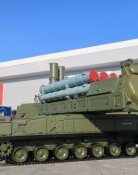[Friday Forum] Debate on Chaebol Reform
The current debate on chaebol reform policy reminds of a story of a distant country.
When famine was severe, there lived a person who raised pigs in a country town. He was resisting to the idea of eating pigs even if his family was suffering from starvation. One day, villagers broke into his house. As the house became chaotic due to the villagers’ sudden invasion, pigs were dumbfounded and began to aimlessly leap around the house. When these pigs became obstacles to the owner, who was busy protecting his properties with his gun, the owner got upset and kicked these pigs out of his own house, which tried to protect the owner, and continued to use his gun.
This story gives a message that we can lose sight of the goal by focusing too much on the current affair. For instance, if running itself is not the goal but reaching a certain destination within a limited time is, we cannot brag about how fast we are running toward an opposite direction. To confuse the ends with the means was what the pig owner did.
As we look at the current debate on chaebol policy among the government, business circle, and the ruling-opposition party, we are concerned whether we all are like the pig owner. `Restructuring of big companies` itself is not the ultimate goal. It is means by which big companies can enhance the companies` efficiency for the international competitiveness.
Moreover, restructuring is painful but necessary process for all the big companies, including chaebol, to survive in the midst of globalization. There are two ways in which various policies for the restructuring can be considered. First, restructuring policies can be directed to enhance the companies’ competitiveness by straitening out insolvent operation. Second, restructuring policies can introduce future oriented systems that can be helpful to improve competitiveness in the world of unlimited competition.
To straiten out the insolvent financial organizations and to carry out the `work out` policy to the problem-stricken companies through the input of vast amount of public funds, which derived from tax, was a part of `restructuring policy.` The `big deal,` which was directed to improve the weak financial structure of chaebol and to enhance the core areas of business, was also a part of `restructuring policy.` However, if we look at some of the problematic companies, we wonder whether the `big deal` has contributed to the improvement of the financial structure and to the enhancement of the core areas of business.
Along with these policies, other policies, such as enhancement of transparency in corporate management, internationalization of the standard for financial statement, and the minority shareholders right protection, were the necessary restructuring policies for the enhancement of the future oriented competitiveness. However, introduction of some of the policies, such as policy on the enhancement of transparency in corporate management, and policy on the institutionalized apparatus for structural improvement, are not yet satisfactory. Moreover, introduction of the company insolvency related law is still in the process of debate.
Therefore, the focal point of debate on the `restructuring of big companies` should be focused on whether it can achieve the goal and on how it progresses. It is concerning that the focus of current debate on chabol`s debt-to-equity ratio and the restriction on conglomerates` equity in subsidiaries may change to the ideological debate on `anti-chaebol` and `pro-chaebol.` In order to prevent the second and the third economic crisis, we need to reexamine our task at this moment.
Headline News
- Ukraine says N. Korea’s first troops arrive in Kursk
- N. Korea begins installing barriers on Donghae Line after 'bombing show'
- K-defense operating profit expected to jump by 200% in Q3
- Seoul City launches DDP rooftop tours, celebrating 10th anniversary
- Ahn Jung-geun’s historic writings return to Korea in 15 years







